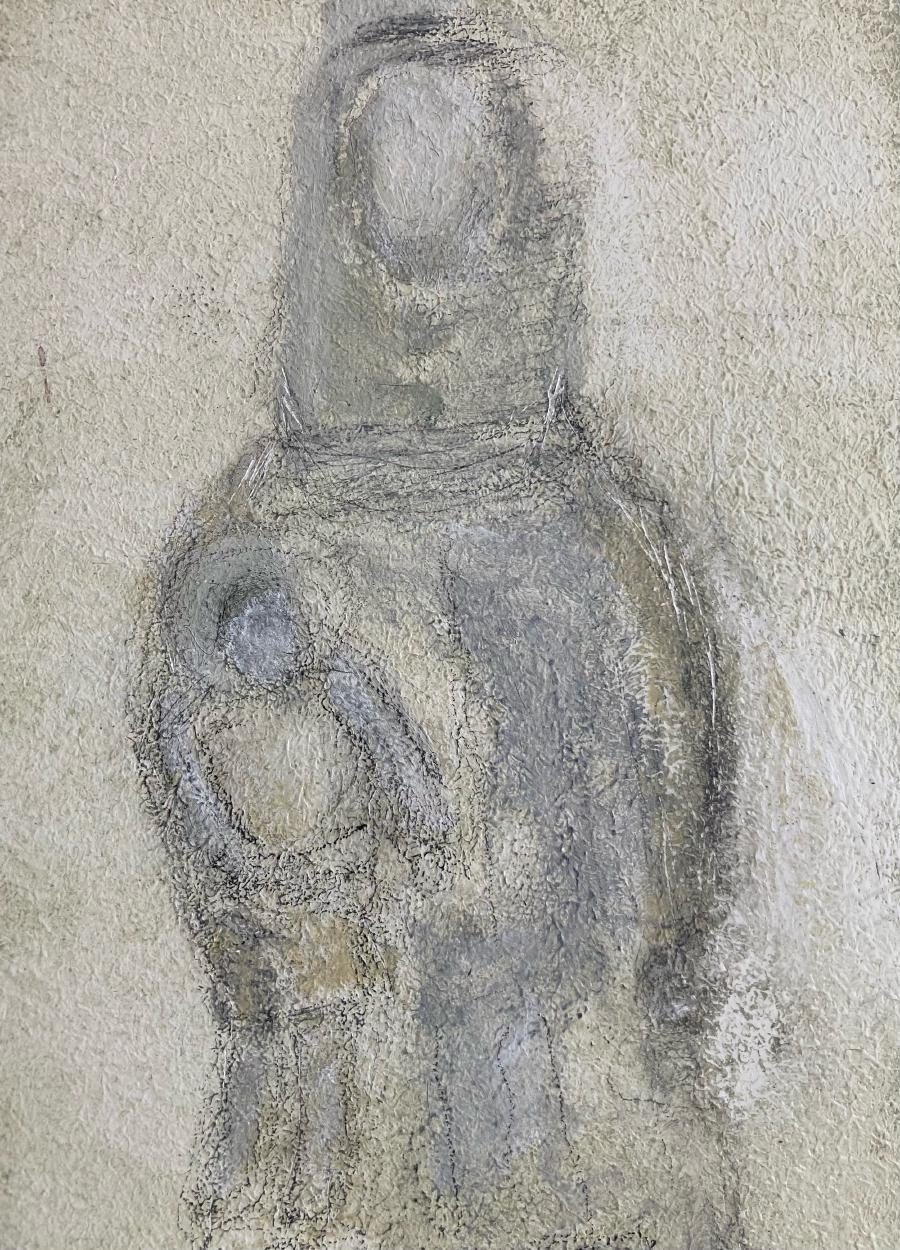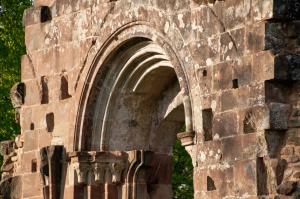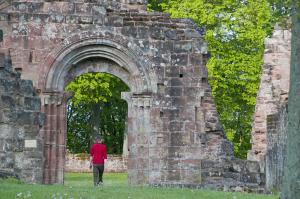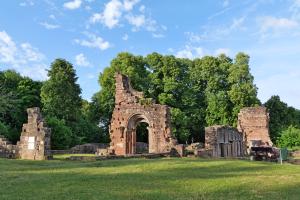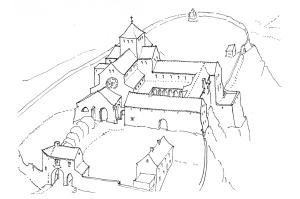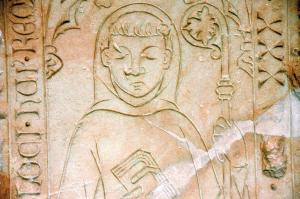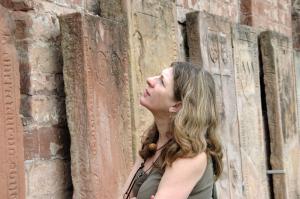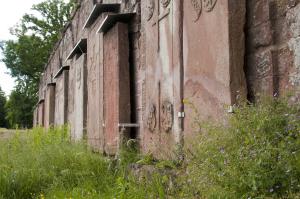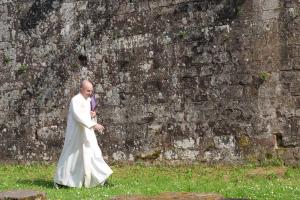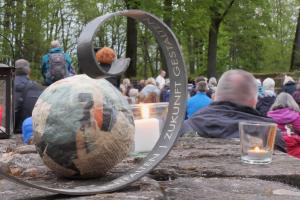Revelation
Text | Photographs | Drawing: Peter Michael Lupp
Place-related point of reference for the poetic thinking pictures
Wörschweiler Abbey ruins, Homburg-Wörschweiler. Former Cistercian abbey of Wörschweiler (12th/13th century). Remains of the west façade of the abbey church. Bud capital, tomb slab for Ennela (wife of the knight Slompo von Buntenbach), sacrament niche, tomb slab with “Wörschweiler star”.
The Virgin Mary of the Cistercian church in Wörschweiler
The Cistercian order has covered the European continent with a network of settlements since the late 11th century. According to the rule of St. Benedict (around 480-547), the Cistercians found a deep religiousness in a secluded life far away from the cities. Their binding set of rules for all monasteries, the “Carta caritatis”, the “document of love”, demanded a reduction to the essentials in lifestyle, art and architecture.
From the 12th century onwards, Mary and the child are venerated as the “Madonna”; according to the Apocalypse (Revelation 12), she is the woman persecuted by the dragon who gives birth to the child and who “stands on the moon clothed with the sun and crowned with stars”.
Throughout his life, the Cistercians were devotees of Mary, whom he referred to as the “Mother of the Order”. To this day, all monastery churches are dedicated to the community of Mary, which is celebrated especially on the main feast of the order (Feast of the Assumption) on August 15.
The construction of the monastery church of St. Maris at the Cistercian abbey in Wörschweiler dates back to the period between 1171 and 1235 and was a three-aisled, vaulted building made of sandstone. The oldest documents from the 13th century show that the Cistercian abbey in Wörschweiler was dedicated to Mary and that the monastery hill was also referred to as “Marienberg”.
The most important - perhaps also the only - sculpture in the monastery church was therefore a sandstone Mother of God with the Child. This sculpture, which unfortunately no longer exists today, is the subject of the contemporary thinking pictures.
